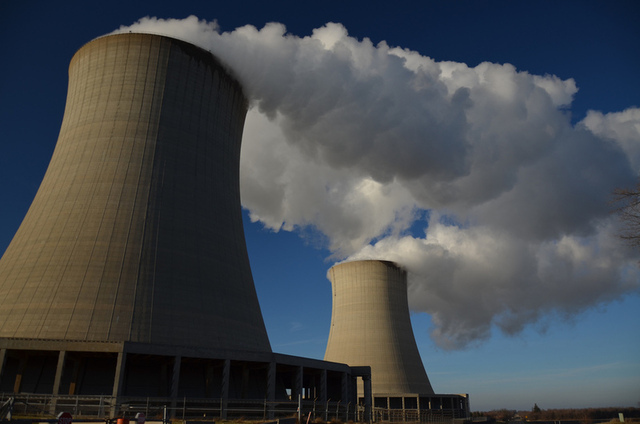Godzilla! Fukushima Radiation Hits West Coast

As the Fukushima radiation hits the West Coast, we would do well to recall that Cascadia, The Pacific Northwest, is no stranger to the intercontinental pollution:
The Journal Environmental Science and Technology reports in a new study that the Fukushima radiation plume contacted North America at California “with greatest exposure in central and southern California”, and that Southern California’s seaweed tested over 500% higher for radioactive iodine-131 than anywhere else in the U.S. and Canada.~ Projected paths of the radioactive atmospheric plume emanating from the Fukushima reactors, best described as airborne particles or aerosols for 131I, 137Cs, and 35S, and subsequent atmospheric monitoring showed it coming in contact with the North American continent at California, with greatest exposure in central and southern California. Government monitoring sites in Anaheim (southern California) recorded peak airborne concentrations of 131I at 1.9 pCi m−3
With radioactive debris starting to wash up on the shores, and the Japanese burning radioactive materials instead of disposing of them, radioactive rain-outs will continue for some time … even on the Pacific Coast.
Looking at the body of scientific research examining the ways that smokestack emissions cross oceans to cause pollution problems halfway around the world, we can see how the pattern plays itself out. For example, the US National Oceanic and Atmospheric Administration states:
Several recent studies have shown that powerful spring winds can carry Asian pollution into the atmosphere above North America. …some of the imported pollution can descend to the surface, where it affects ground-level ozone, a regulated pollutant. At high concentrations, ground-level ozone can cause severe respiratory effects in some people, and it damages crops, trees, and other vegetation.“We showed that Asian pollution directly contributes to surface ozone pollution episodes in parts of the western United States,” said Meiyun Lin, Ph.D., lead author of the new study.
Well, duh, some of the air pollution problems in North America result from the pollution emitted by Asian coal plants and industrial facilities.
NOAA’s findings were not entirely new.
The Task Force on Hemispheric Transport of Air Pollution found that as much as a quarter of ground level ozone pollution in the northern mid-latitudes arrives from the stratosphere. Downwind of eastern Asia (i.e. North America), researchers have documented that marine air can import ozone concentrations that exceed air quality standards. Scientists there have also shown that soot, dust, and mercury can travel from one continent to another.
The Northwest is no stranger to the intercontinental pollution. As Sightline has pointed out, sulfur compounds, soot, and other byproducts of Asian coal combustion are detectable on mountaintops in the western United States. Researchers have also linked ozone in the air above the United States to pollution from developing Asian countries that are burning fossil fuels.
Mercury is especially likely to travel across the Pacific Ocean. Oregon researchers estimate that as much as 18 percent of the mercury in Oregon’s Willamette River comes from overseas, increasingly China. Another study found that human-created pollution from Asia contributed to 14 percent of the mercury dropped on Mount Bachelor here in Central Oregon.
With ample documentation, we already know how the radiation will get here, and probably when. The only question is to what lengths the corporate media will go to to misinform and/or deny how much radiation will get here.




